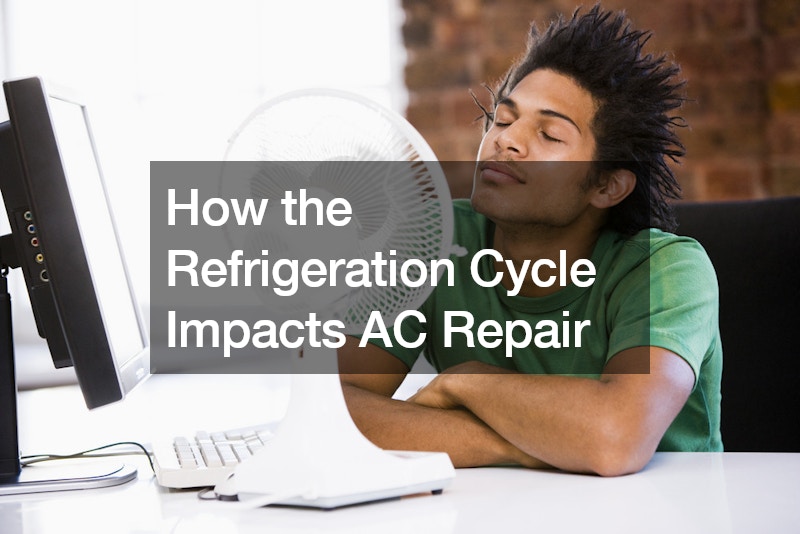Understanding the refrigeration cycle is crucial for comprehending AC repair processes. This cycle forms the backbone of air conditioning systems, facilitating the transfer of heat to maintain comfortable indoor temperatures. The refrigeration cycle involves four main components: the compressor, condenser, expansion valve, and evaporator.
During operation, the compressor plays a pivotal role in pressurizing the refrigerant gas, raising its temperature and pressure. The high-pressure gas then flows to the condenser, where it releases heat and condenses into a liquid state. The liquid refrigerant passes through the expansion valve, which regulates its flow into the evaporator.
Within the evaporator, the liquid refrigerant absorbs heat from the indoor air, causing it to evaporate into a gas once again. This process cools the air inside the home, which is then circulated back into the living space via the AC system’s ductwork. The cycle repeats continuously to maintain a consistent indoor temperature.
When AC repair is required, issues within the refrigeration cycle are often the culprit. Common problems may include refrigerant leaks, compressor malfunctions, or issues with the expansion valve or evaporator coil. A skilled AC repair technician can diagnose and address these issues, restoring the system’s functionality and efficiency. The refrigeration cycle serves as the foundation of air conditioning systems, influencing the effectiveness and reliability of AC repair services. By understanding how this cycle operates, homeowners can better grasp the intricacies of AC maintenance and repair processes.



